Renault Espace VS VW Caddy – Specs, Efficiency & Price Comparison
Find out now which car fits your needs better!
The Renault Espace (SUV) is powered by a Full Hybrid engine and comes with a Automatic transmission. In comparison, the VW Caddy (High Roof Estate) features a Petrol, Diesel or Plugin Hybrid engine and a Manuel or Automatic gearbox.
When it comes to boot capacity, the Renault Espace offers 692 L, while the VW Caddy provides – depending on what matters most to you. If you’re looking for more power, you’ll need to decide whether the 200 HP of the Renault Espace or the 150 HP of the VW Caddy suits your needs better.
There are also differences in efficiency: 4.90 L vs 0.50 L. In terms of price, the Renault Espace starts at 37500 £, while the VW Caddy is available from 27800 £.
Compare all the key specs now and find out which model fits your lifestyle best!
Renault Espace
The Renault Espace is a testament to innovative design, combining versatility with comfort to offer a unique driving experience. Its sleek exterior is complemented by a spacious interior, designed to cater to the needs of families and adventurers alike. With advanced technology and a focus on safety, the Espace seamlessly blends practicality with modern sophistication, making it a standout choice in the MPV segment.
details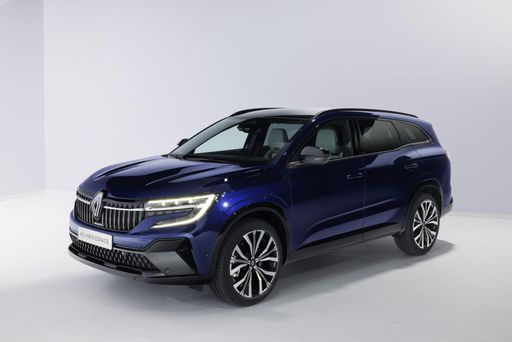 @ Renault
@ Renault
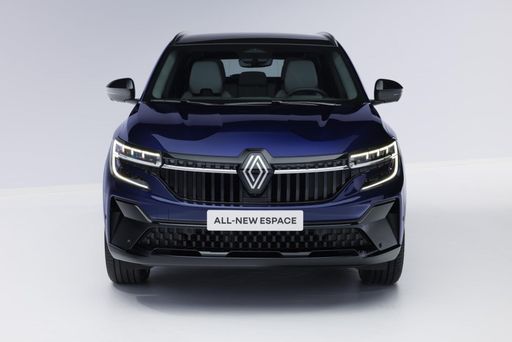 @ Renault
@ Renault
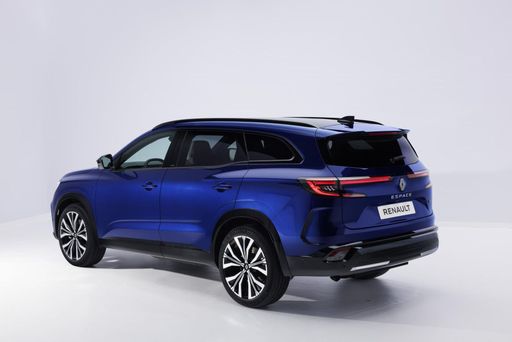 @ Renault
@ Renault
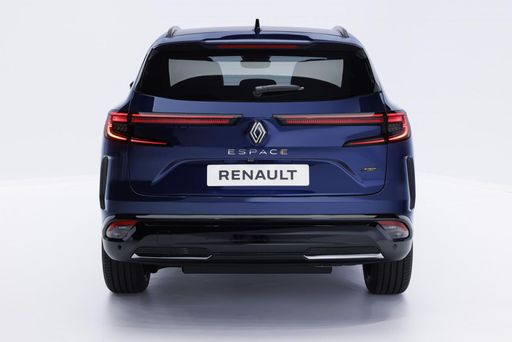 @ Renault
@ Renault
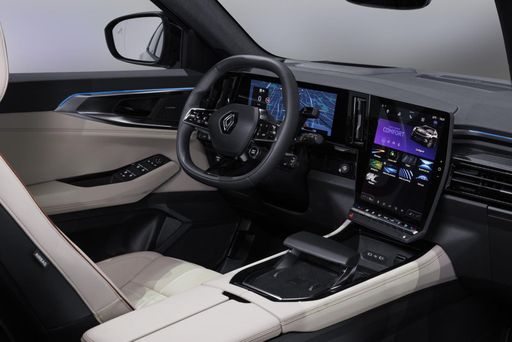 @ Renault
@ Renault
VW Caddy
The VW Nutzfahrzeuge Caddy Hochdach-Kombi is a versatile choice for those seeking extra space and practicality in their everyday vehicle. With its functional high roof and adaptable interior, it easily accommodates both passengers and cargo. The Caddy also stands out with its modern design and features aimed at providing comfort and convenience on the road.
details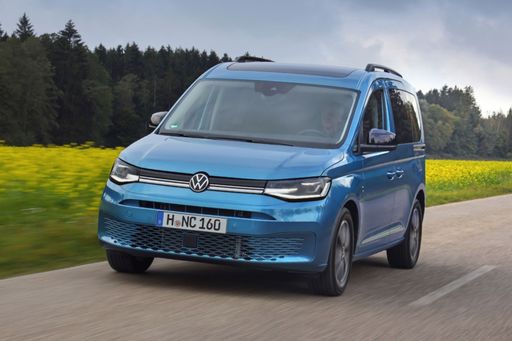 @ vwpress
@ vwpress
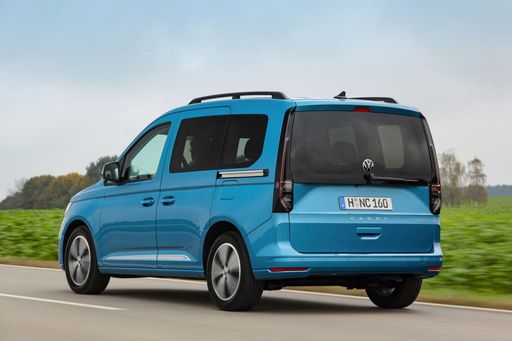 @ vwpress
@ vwpress
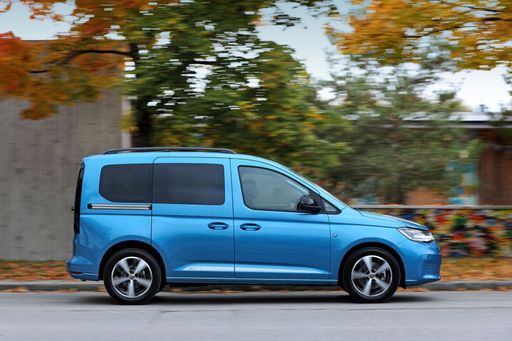 @ vwpress
@ vwpress
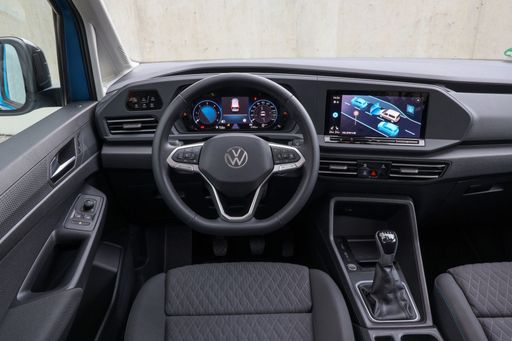 @ vwpress
@ vwpress

|

|
|
|
|
Costs and Consumption |
|
|---|---|
|
Price
37500 - 41400 £
|
Price
27800 - 45900 £
|
|
Consumption L/100km
4.90 L
|
Consumption L/100km
0.5 - 6.9 L
|
|
Consumption kWh/100km
-
|
Consumption kWh/100km
-
|
|
Electric Range
-
|
Electric Range
116 - 121 km
|
|
Battery Capacity
-
|
Battery Capacity
19.70 kWh
|
|
co2
110 g/km
|
co2
10 - 165 g/km
|
|
Fuel tank capacity
55 L
|
Fuel tank capacity
50 L
|
Dimensions and Body |
|
|---|---|
|
Body Type
SUV
|
Body Type
High Roof Estate
|
|
Seats
5 - 7
|
Seats
5 - 7
|
|
Doors
5
|
Doors
5
|
|
Curb weight
1673 - 1783 kg
|
Curb weight
1575 - 1998 kg
|
|
Trunk capacity
212 - 692 L
|
Trunk capacity
-
|
|
Length
4746 mm
|
Length
4500 - 4853 mm
|
|
Width
1830 mm
|
Width
1855 mm
|
|
Height
1645 mm
|
Height
1819 - 1860 mm
|
|
Payload
404 - 581 kg
|
Payload
501 - 710 kg
|
Engine and Performance |
|
|---|---|
|
Engine Type
Full Hybrid
|
Engine Type
Petrol, Diesel, Plugin Hybrid
|
|
Transmission
Automatic
|
Transmission
Manuel, Automatic
|
|
Transmission Detail
Automatikgetriebe
|
Transmission Detail
Manual Gearbox, Dual-Clutch Automatic
|
|
Drive Type
Front-Wheel Drive
|
Drive Type
Front-Wheel Drive, All-Wheel Drive
|
|
Power HP
200 HP
|
Power HP
102 - 150 HP
|
|
Acceleration 0-100km/h
8.80 s
|
Acceleration 0-100km/h
11.4 - 14 s
|
|
Max Speed
174 km/h
|
Max Speed
173 - 186 km/h
|
|
Torque
-
|
Torque
220 - 320 Nm
|
|
Number of Cylinders
3
|
Number of Cylinders
4
|
|
Power kW
147 kW
|
Power kW
75 - 110 kW
|
|
Engine capacity
1199 cm3
|
Engine capacity
1498 - 1968 cm3
|
General |
|
|---|---|
|
Model Year
2025
|
Model Year
2024
|
|
CO2 Efficiency Class
C
|
CO2 Efficiency Class
E, F, B
|
|
Brand
Renault
|
Brand
VW
|
Renault Espace
A New Era for the Renault Espace
The Renault Espace, a staple in the automotive industry, has evolved to embrace a bold new direction with its latest iteration. With its transition into a sleek and stylish SUV, the Espace continues to offer the versatility and innovation that customers expect from the renowned French automaker. This article delves into the advanced technical details and groundbreaking innovations of the current Renault Espace model.
Powertrain Engineering: Full Hybrid Brilliance
The core of the latest Renault Espace is its sophisticated E-Tech Full Hybrid technology. At the heart of this system lies a dynamic three-cylinder engine paired with electric motor support, generating a robust 200 PS. This ensures that drivers experience both power and efficiency in their journeys. The hybrid engine achieves remarkable fuel economy, consuming just 4.7 L/100km, and demonstrates Renault’s commitment to environmental responsibility with a CO2 output of just 107 g/km, earning it a classification of CO2 efficiency class C.
Design and Dimensions: Spacious Comfort in an SUV Shell
Renault’s transformation of the Espace into an SUV doesn’t compromise on its title hinting towards ample interior space. With seating configurations for either five or seven passengers, the Espace adapts to diverse family needs. The SUV's dimensions—4,722 mm in length, 1,843 mm in width, and 1,645 mm in height—ensure that it stands out both aesthetically and functionally on the road.
The generous boot capacity ranges from 159 to 581 litres, allowing it to accommodate everything from daily groceries to larger travel luggage with ease. The five-door design further enhances its practicality, making the loading and unloading process a breeze.
Performance and Drivability: A Smooth Journey
The Renault Espace offers impressive performance metrics, accelerating from 0-100 km/h in a commendable 8.8 seconds. Despite its size, the Espace maintains a commendable top speed of 174 km/h, ensuring that it is as capable on highways as it is in an urban environment. The front-wheel drive system, paired with an automatic gearbox, provides a seamless driving experience—ideal for both city commutes and longer road trips.
Interior Comfort and Technology: A Hub of Innovation
Renault’s focus on creating a comfortable and technologically advanced cabin is evident in the Espace. The choice of various trims—Esprit Alpine Multi-Mode Automatik and Iconic Multi-Mode Automatik—offers luxury and personalisation. Modern technology is integrated throughout the vehicle, with intuitive infotainment options that keep all passengers connected and entertained.
Value for Money: A Competitive Edge
The Renault Espace positions itself competitively in the market with its starting price range from €43,800 to €48,300. Such pricing reflects its status as a premium vehicle that offers cutting-edge hybrid technology, elegant design, and versatile functionality.
With its blend of performance, technology, and space, the Renault Espace remains an outstanding option for families and individuals alike, looking to embrace innovative motoring in the SUV segment.
VW Caddy
A Versatile Classic Reimagined: The Volkswagen Caddy
The Volkswagen Caddy has long been celebrated as a versatile workhorse, adeptly bridging the gap between utility and comfort. With its roots tracing back to the 1980s, the Caddy has evolved considerably, transforming from a humble commercial vehicle to a sophisticated multi-purpose van. The latest model continues this tradition by offering innovative features and enhanced technical specifications, reaffirming its status as an indispensable vehicle for both professional and personal use.
Efficient Engines and Environmental Innovation
At the heart of the Volkswagen Caddy lies an array of engines designed to balance performance with efficiency. The latest generation offers a selection of TSI petrol and TDI diesel engines, each engineered to meet the strictest environmental standards. These Euro 6 compliant engines not only reduce emissions but also ensure optimal fuel efficiency, making the Caddy an economically viable choice for businesses and environmentally conscious drivers alike.
For those seeking an even greener option, Volkswagen offers a natural gas engine variant. This innovative powertrain reduces CO2 emissions significantly, yet delivers a driving experience that remains characteristically smooth and powerful. This commitment to alternative energy sources reflects Volkswagen's dedication to sustainability and forward-thinking automotive design.
Advanced Connectivity and Safety Features
The Volkswagen Caddy is not just about robust performance; it also shines in the realm of technology and safety. The modern dashboard is equipped with the Discover Media navigation system, integrating satellite navigation with real-time traffic updates. This intuitive infotainment system gets wirelessly connected to smartphones via Apple CarPlay and Android Auto, keeping drivers informed and entertained during every journey.
Safety is paramount in the latest Caddy, which comes standard with a suite of advanced driver assistance systems. Front Assist with City Emergency Braking ensures crucial safety in urban environments, while Adaptive Cruise Control with speed limiter provides comfort and control on the open road. Additionally, features like the Park Assist system make maneuvering in tight spaces a breeze, offering peace of mind and ease of use no matter the driving conditions.
Dynamic Design and Practicality
Blending aesthetics with functionality, the redesigned exterior of the Volkswagen Caddy is both modern and practical. It features a streamlined silhouette that not only improves aerodynamic efficiency but also enhances its visual appeal. From the distinctive front grille to the LED headlamps, every design element serves a purpose, resonating Volkswagen’s design philosophy of form following function.
Inside, the Caddy offers a remarkably spacious interior, adaptable to a variety of needs. Depending on the configuration, it accommodates up to seven passengers comfortably or can be transformed to offer substantial cargo space, catering to professionals who require versatility from their vehicles. The interior details are thoughtfully crafted, with high-quality materials that sustain durability and comfort over long-term use.
Conclusion: A Modern Mainstay
The Volkswagen Caddy, with its latest iteration, continues to embody versatility and innovation. Its efficient powertrains, cutting-edge connectivity features, and commitment to safety set new standards in the compact van segment. Whether utilized as a family vehicle or a business asset, the Caddy remains a formidable choice, carrying forward a legacy of reliability and ingenuity.
For drivers seeking a well-rounded vehicle that offers the best of both worlds—commercial reliability with personal comfort—the Volkswagen Caddy stands as an exemplary choice. It is not just a vehicle; it's a partner on wheels, designed for the multifaceted demands of modern life.
The prices and data displayed are estimates based on German list prices and may vary by country. This information is not legally binding.
